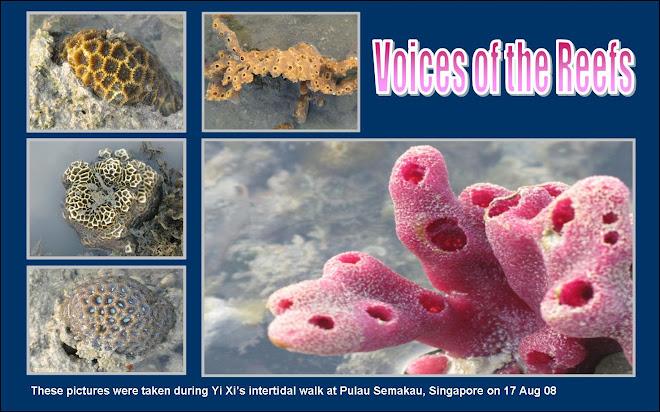We went to Changi Beach for an intertidal walk on 27 June. To our surprise, we saw many interesting marine life. The seabeds were exposed during the low tide.

The beach was very serene.


I was busy looking for marine life.

We noticed 3 sea cucumbers lying beside each other.

This sea cucumber is secreting a fluid.




We also saw several sea cucumbers with red thorns on them.


In addition, we also noticed many sea anemones. Here are some of them:





We are not sure what this is, but based on our research, we think that it is a mushroom anemone as they are similar in shape.

We think that this is a sea anemone, but we are unable to determine its identity as of yet.



Several large shells were also spotted.

We even found a crab with barnacles growing on it.
Another type of crab. This one has elongated claws.
This is a crab moult.

We even spotted a pipefish!

We also saw many sand dollars.

These are casts left by acorn worms.



There were also many tiny sand balls. They are made when crabs pass sand through their mouths for food., leaving behind these sand balls.

Are you surprised with the rich marine life at Changi Beach? Why not check the next low tide and make a trip there? Tide tables can be found at http://app.nea.gov.sg/cms/htdocs/article.asp?pid=2293
















